15 Health Benefits of Chaturanga Dandasana & How to Do It?
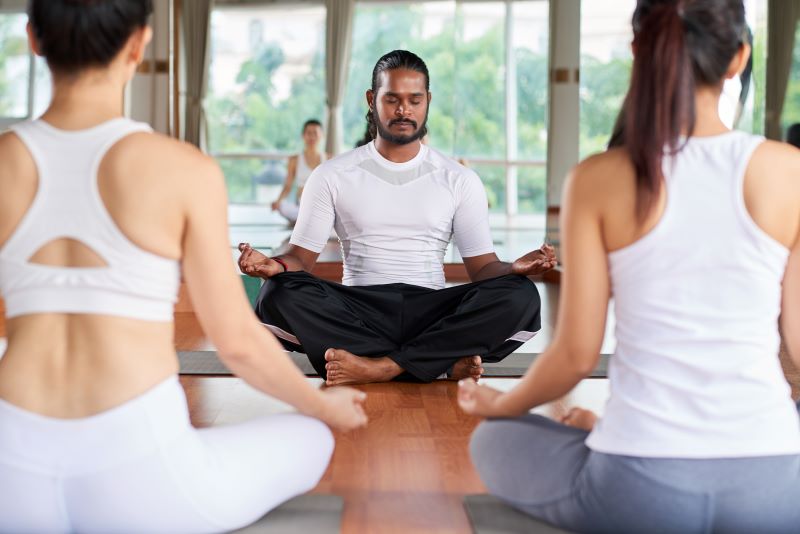
Adopting Chaturanga Dandasana can be beneficial if you try to make your body active and restore your muscle flexibility. In addition, this posture energises your whole body and increases your body strength with proper blood circulation.
Keep scrolling to learn more about the benefits of Chaturanga Dandasana!

Table of Contents

What is Chaturanga Dandasana?
In Sanskrit, ‘chatur’ means four, and ‘anga’ means limb. Therefore, Chaturanga Dandasana is a yoga posture that involves four limbs. It is also called the low plank pose.
This pose is beneficial for the arms, back, shoulder, and abdomen muscles. It also helps strengthen hands and wrists. Follow the next segment to learn about the benefits of Chaturanga Dandasana in detail.
How to Perform Chaturanga Dandasana (Four-Limbed Staff Pose)?
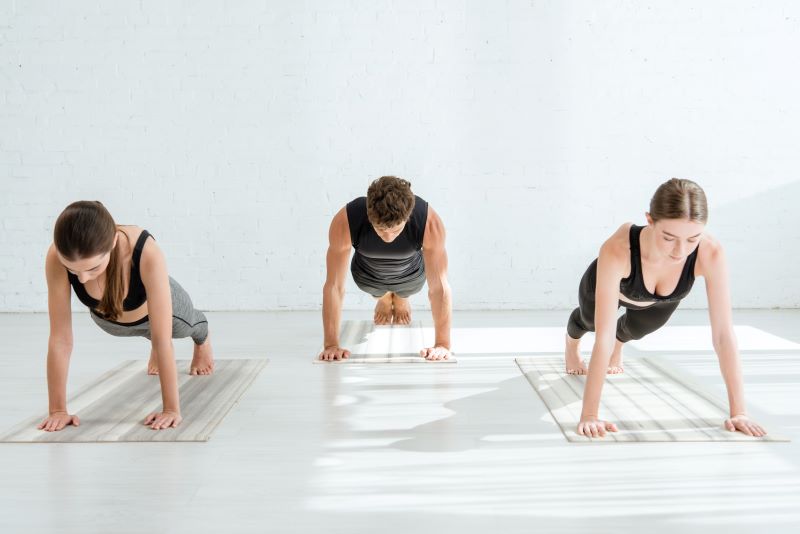
Chaturanga Dandasana or four-limbed staff pose. It helps to shape the arms, shoulders, and back and develops basic core stability. Here are a few steps for performing this asana:
Step 1: Start in a high plank position.
Step 2: Keep your hands on the floor and your wrists under your shoulder.
Step 3: Exhale and bend your elbows and shoulder lower to the level of your elbows.
Step 4: Squeeze your elbows towards your body.
Step 5: Keep your gaze down and slightly lift your head.
Step 6: Hold this position for 10 seconds.
Step 7: Exhale and lift your body in a downward-facing dog pose.
15 Health Benefits of Chaturanga Dandasana
Chaturanga Dandasana is a foundational yoga posture. It strengthens the body, enhances flexibility, and improves overall well-being. Regularly practising Chaturanga Dandasana can lead to numerous health benefits.
1. Increases Body’s Flexibility
Chaturanga Dandasana helps retain your body flexibility by stretching the muscles of your entire body. Therefore, this yoga posture can be a great help if you perform it as a warm-up before any advanced exercise.
2. Strengthens Back and Core Muscles
Keeping your body in perfect alignment can accumulate strength in your spine and core muscles. It also helps to correct body posture and gives better stability. Therefore, this posture helps treat back ailments.
3. Prepares You for Advanced Yoga Poses
Chaturanga Dandasana is a preparatory pose for other advanced yoga poses. The pose helps develop stronger abdominal muscles and better body balance. Further, it is beneficial for learning advanced poses.
4. Improves Overall Body Health
Four-Limbed Staff Pose is a great posture for body strength and flexibility. The pose involves moving major body parts like arms, abdomen, and legs and strengthening the spine and back muscles. All of these have made the posture perfect for retaining overall body health.
5. Balances Chakras
Chakras are the gateways of our spiritual connectivity. Chaturanga Dandasana is an effective posture to rejuvenate the third chakra, Manipura. This chakra is associated with strong self-worth and awareness of one's own identity.
6. Strengthens Arms
In Chaturanga Dandasana, you need to keep your body balanced on your hands. Thus it requires strength of your forearms, arms and wrists. Practising this posture will help you get powerful and toned biceps and triceps.
7. Better Emotional Stability
By engaging in mindful breathing and physical exertion, Chaturanga Dandasana can help regulate emotions and improve mood.
8. Supports Cardiovascular Health
Engaging in Chaturanga Dandasana increases heart rate, promoting cardiovascular fitness. Improved cardiovascular health leads to better blood circulation and heart function. Regular practice supports overall heart health and endurance.
9. Reduces Stress
Holding and focusing on this pose helps in reducing stress. Mindful breathing during the pose calms the nervous system and mind. It can lead to improved mental clarity and reduced anxiety.
10. Aids Digestion
Engaging the core muscles in this pose stimulates digestive organs. Improved digestion helps in nutrient absorption and prevents digestive issues. It promotes overall gut health and comfort.
11. Improves Balance
This pose requires concentration and coordination, enhancing overall body balance. Better balance reduces the risk of falls and injuries. It supports more effective movement in other physical activities.
12. Boosts Confidence
Mastering Chaturanga Dandasana can increase self-esteem and body confidence. Achieving this challenging pose provides a sense of accomplishment and motivation. It encourages a positive outlook towards fitness goals.
13. Enhances Mental Focus
Maintaining the posture requires mental concentration and discipline. Enhanced mental focus translates to better performance in various tasks. It supports cognitive function and mindfulness practices.
14. Supports Joint Health
Strengthening muscles around joints provides better support and reduces strain. Improved joint health prevents injuries and enhances mobility. Regular practice can alleviate symptoms of joint-related conditions.
15. Promotes Relaxation
Practising Chaturanga Dandasana with mindful breathing promotes deep relaxation. It helps release tension and fosters a sense of calm. This can lead to improved sleep quality and overall well-being.
Types of Chaturanga Dandasana
Chaturanga Dandasana is a fundamental yoga posture. It strengthens the arms, shoulders, and core, enhancing overall body stability. Here are some common types of Chaturanga Dandasana.
1. Classic Chaturanga Dandasana
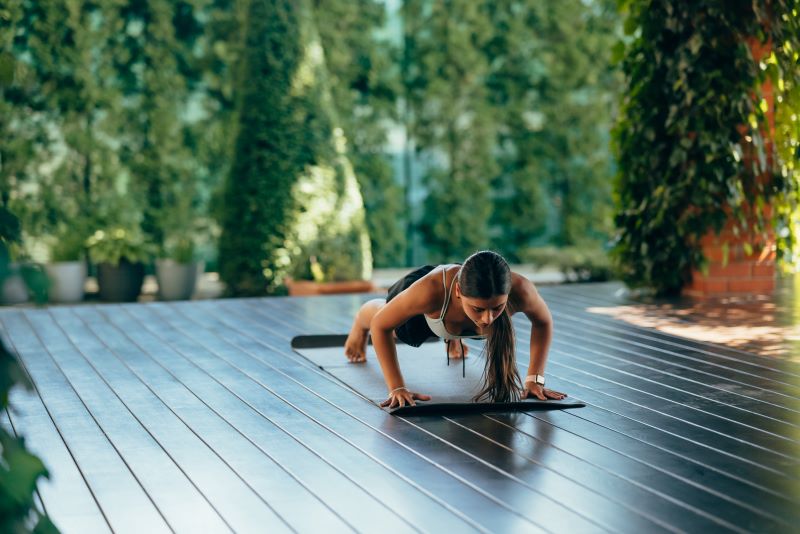
Classic Chaturanga Dandasana involves maintaining a straight line from head to heels. Begin in plank, lower halfway down, keeping elbows at 90 degrees. This variation builds upper body strength and core stability. Ensure proper alignment to avoid shoulder strain. It's foundational in many Vinyasa sequences.
2. Modified Chaturanga Dandasana
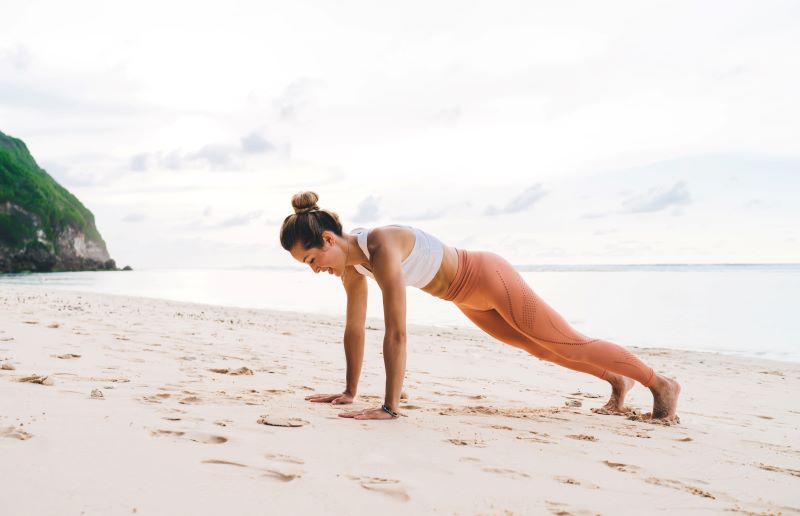
Modified Chaturanga Dandasana is suitable for beginners needing extra support. Start on knees instead of toes, maintaining a straight line from head to knees. This reduces strain on arms and shoulders, making it accessible. Focus on core engagement and arm alignment. Progress to the classic version gradually.
3. One-Legged Chaturanga Dandasana
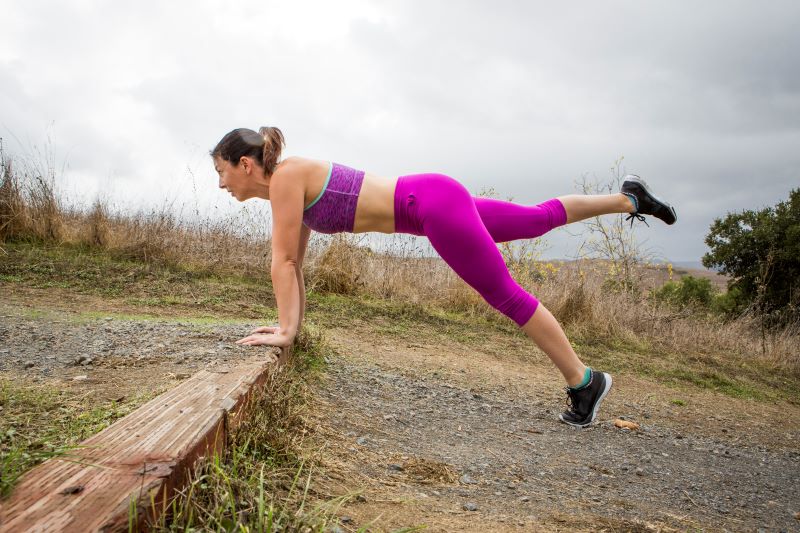
One-Legged Chaturanga Dandasana adds a balance challenge to the pose. Begin in plank, lift one leg, then lower into Chaturanga. Keep the lifted leg extended and parallel to the floor. This variation intensifies core and arm engagement. Switch legs to maintain muscle balance and avoid strain.
Things to Know Before Doing Chaturanga Dandasana Yoga
Chaturanga Dandasana is a challenging yoga asana. It requires strength, stability, and proper alignment to execute correctly. Before attempting it, here are some essential considerations:
- Strength and Alignment: Ensure your core, arms, and shoulders are vital for proper form. Misalignment can strain these areas and lead to injury.
- Wrist Health: Strengthen wrists gradually and warm up before practising. Distribute weight evenly to avoid wrist pain or discomfort.
- Shoulder Engagement: Keep shoulders away from the ears and shoulder blades down. Engage core muscles to protect the lower back.
- Elbow Alignment: Hug elbows in toward the ribs to protect them. Avoid flaring elbows outward, which can strain the joints.
- Breath Awareness: Coordinate breath with movement. Inhale as you prepare, exhale as you lower down, maintaining steady breathing throughout.
- Modification Options: If you are unable to maintain proper form, modify with your knees on the ground. Focus on alignment and gradually build strength.
How Long to Hold Chaturanga Dandasana?
Chaturanga Dandasana, a foundational yoga pose, strengthens the arms and core while promoting alignment and stability. But how long should one hold this pose for optimal benefits?
- Beginner Level: Hold Chaturanga for 5-10 seconds to gradually build strength, focusing on proper form and alignment to prevent injury.
- Intermediate Level: Aim for 15-30 seconds to challenge endurance and deepen muscle engagement. maintaining stability and controlled breathing throughout the hold.
- Advanced Level: Hold Chaturanga for 30 seconds to 1 minute, emphasising strength, stability, and mind-body connection. while maintaining alignment and controlled breathing for optimal benefits.
In conclusion, the duration of holding Chaturanga Dandasana should align with your fitness level and goals. Proper form, alignment, and gradual progression are prioritized for optimal benefits and injury prevention.
Risks of Overdoing Chaturanga Dandasana
The benefits of Chaturanga Dandasana far outweigh its potential dangers, but people must practice moderation to avoid hurting themselves during this yoga pose.
- Shoulder Strain: Performing Chaturanga too many times can cause inflammation of the shoulder muscles and ligaments. This risk is avoided by following the proper technique and posture.
- Wrist Injury: Unnecessary repetition may cause pain or injury to wrist joints. Exercises to strengthen wrists and the use of props can minimise this risk.
- Lower Back Pain: Inadequate actions of the core muscles or misuse of the body. Chaturanga can put pressure on the lower spine, causing pain or damage. It’s essential to develop abdominal muscles and perform the exercise correctly.
- Elbow Strain: Painful or swollen elbow joints may develop from strain due to poor form or overuse. This can be prevented by a slow progression of strength and keeping an alignment check.
- Fatigue and Overuse: Continuously practising Chaturanga without giving the body time to recover can cause muscle strain and injuries. This risk can be minimised by properly scheduling practices and incorporating a variety of activities into workouts.
Performing Chaturanga Dandasana with awareness, correct form, and avoiding overuse or misuse can allow one to reap the most benefits while also reducing the likelihood of injury.
Important Tips for Practising Chaturanga Dandasana
Though yoga seems easy, you must know certain technicalities to perform the pose perfectly. Hence, as a beginner, you may need the help of some tips, which are as follows:
1. Take it Slowly
If you can not perform Chaturanga Dandasana perfectly, you should initially take it slow. Do not force your body to perform the posture, as that would harm it. Therefore, you can first strengthen your core and upper body by holding the plank for a few minutes.
2. Bend Your Knees
You can also curve your knees before bending your elbows initially. However, you must keep your head and knees aligned equally.
3. Make a Substitute Pose
You can keep your knees down, engage your core and hold your chest and chin towards the floor. Afterwards, perform the posture by keeping your chest open and shoulders away from the floor.
What are the Precautions and Contraindications of Chaturanga Dandasana?
You should also maintain some precautions while performing Chaturanga Dandasana to get its maximum benefits without any harm. These are listed below:
Do not keep your shoulder behind your wrists; instead, keep them in a cross position with your wrist.
Do not squeeze your chest while performing the posture.
Try not to lower your body too far as it may injure your shoulder and wrists.
Avoid the pose if you have a shoulder injury.
Perform the posture slowly, and don’t jump back while lifting.
Who Should Avoid Doing Chaturanga Dandasana?
Chaturanga Dandasana is a challenging yoga asana that strengthens the upper body and core muscles. While beneficial for many, some individuals should approach it cautiously or avoid it altogether.
- Wrist or Shoulder Injuries: Those with existing wrist or shoulder issues should avoid Chaturanga Dandasana as it can exacerbate pain and strain these areas, potentially leading to further injury.
- Weak Core Muscles: Individuals with weak core muscles may struggle to maintain proper form in Chaturanga Dandasana, increasing the risk of putting undue stress on the lower back and shoulders.
- Pregnant Women: Pregnant women, especially in the later stages of pregnancy, should avoid this pose due to the pressure it places on the abdomen and the potential risk of compromising stability and balance.
- High Blood Pressure: Individuals with uncontrolled high blood pressure should avoid Chaturanga Dandasana as it involves holding a plank-like position, which can further elevate blood pressure levels and pose health risks.
- Recent Surgery: Those who have undergone recent surgery, particularly in the wrists, shoulders, or abdomen, should refrain from practising Chaturanga Dandasana until they fully recover to prevent reopening wounds or causing strain.
What are the Easy Modifications of Chaturanga Dandasana?
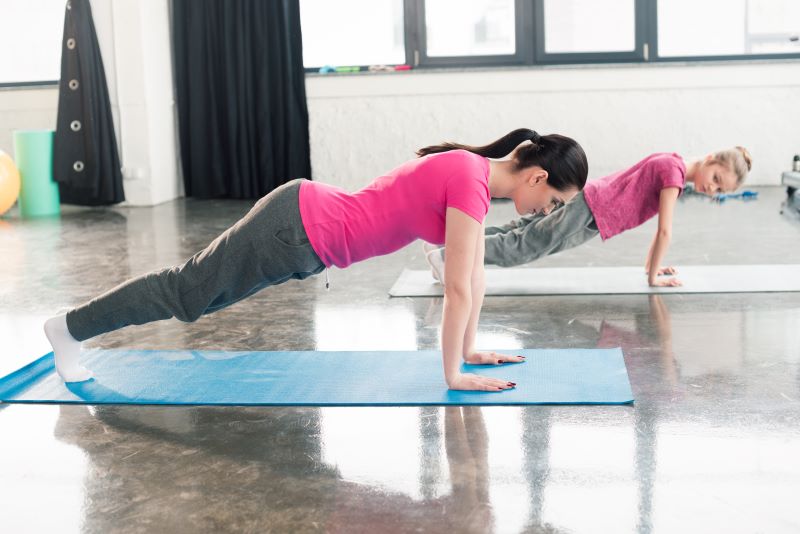
If you are a beginner and can not initially attain perfection at Chaturanga Dandasana, you can start by modifying the pose. The popular modification ideas are as follows:
- Take Help of a Wall: As a beginner, you can perform the posture by standing at the side of a wall. Then, place your arms firmly on the wall and push your body away from it. This will enhance your muscle strength and prepare you for the main posture.
- Prepare a Lifted Landing Spot: If you can’t place your body lower enough, lift your landing spot slightly. Therefore, by resting your chest on a soft surface, you can perform the posture easily in the initial stage.
- Use Yoga Blocks: Keep a yoga block between your inner thighs or under your shoulder for better support during posture. This will also help you maintain proper body alignment.
- Use Straps: Sometimes, beginners can not keep their hands and shoulders aligned to the chest. Therefore, if they tie their hands with a strap and perform the posture, it will be easier for them to keep the alignment correct.
Thus, the discussion on the benefits of Chaturanga Dandasana has revealed some key information about diseases it can treat and more. Therefore, consider this guide if you are a beginner and want comprehensive guidance on Chaturanga Dandasana. Further, consult your physician or an expert if you have serious health issues before practising this posture.













